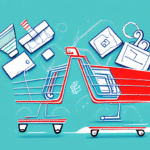Shopping Carts vs Marketplaces: Which Should You Choose?
In the ever-evolving landscape of e-commerce, selecting the right platform to sell your products is pivotal to your business's success. The two primary strategies for online selling are using shopping carts or leveraging marketplaces. This comprehensive guide delves into both options, comparing their advantages and disadvantages, and providing actionable insights to help you make an informed decision.
Understanding Shopping Carts and Marketplaces
What Are Shopping Carts?
A shopping cart is a standalone software platform that allows you to create and manage your own online store. With a shopping cart, you have full control over your website's design, product listings, pricing, and shipping options. Platforms like Shopify and WooCommerce are popular examples, offering extensive customization to align with your brand's identity.
What Are Marketplaces?
Marketplaces are centralized platforms where multiple vendors can list and sell their products. Prominent examples include Amazon, eBay, and Etsy. These platforms provide a built-in audience, streamlined payment processing, and various marketing tools to help sellers reach a larger customer base.
Pros and Cons of Shopping Carts
Advantages
- Full Control: Customize every aspect of your store, from layout to customer experience.
- Branding: Build a unique brand presence that distinguishes you from competitors.
- Data Ownership: Access detailed analytics and customer data to inform business strategies.
- Scalability: Easily expand your product offerings and integrate with various third-party tools.
Disadvantages
- Higher Initial Costs: Monthly fees and additional costs for premium features can add up.
- Technical Maintenance: Requires ongoing management, including updates and security measures.
- Traffic Generation: Responsibility to drive traffic through marketing and SEO efforts.
- Time-Consuming Setup: Building and customizing a store can be time-intensive.
Pros and Cons of Marketplaces
Advantages
- Built-In Traffic: Access to millions of active customers without the need for extensive marketing.
- Ease of Use: Simplified setup process with ready-to-use storefronts.
- Trust and Credibility: Established platforms often have strong reputations, which can enhance customer trust.
- Streamlined Operations: Integrated payment processing, shipping, and customer service support.
Disadvantages
- High Competition: Compete with numerous sellers offering similar products.
- Limited Branding: Less opportunity to establish a unique brand identity.
- Fees and Commissions: Typically charge a percentage of each sale, which can impact profit margins.
- Less Control: Adherence to marketplace policies and limited customization options.
Cost Comparison: Shopping Carts vs Marketplaces
When evaluating costs, it's essential to consider both upfront and ongoing expenses:
- Shopping Carts: Often require monthly subscription fees ranging from $29 to $299 for platforms like Shopify. Additional costs may include transaction fees, premium themes, and apps. For example, according to Shopify's pricing, plans range based on features and support.
- Marketplaces: Typically charge commissions per sale, which can range from 5% to 20%, depending on the platform and product category. For instance, Amazon's selling fees vary based on the type of product and selling plan.
Additionally, marketing costs differ significantly. With a shopping cart, you’re responsible for your own marketing efforts, which can involve expenses related to SEO, advertising, and content creation. In contrast, marketplaces inherently provide traffic, potentially reducing your marketing budget needs.
Customization and Flexibility
Shopping Carts
Shopping carts offer extensive customization options, allowing you to:
- Choose and modify themes to reflect your brand's aesthetic.
- Customize the checkout process to enhance user experience.
- Integrate a wide range of third-party applications for added functionality.
Marketplaces
Marketplaces provide limited customization, typically including:
- Standardized storefront layouts.
- Basic branding options, such as logos and banners.
- Predefined categories and product listings.
While this limits your ability to personalize the shopping experience, it ensures consistency and reliability across the platform.
Choosing the Right Platform for Your Business
For Small Businesses
Small businesses with limited budgets and resources might find marketplaces more appealing due to their low initial costs and built-in audience. Platforms like Etsy or eBay can help new sellers quickly reach potential customers without the need for significant marketing investments.
For Large Businesses
Established businesses with a broad product range and the resources to manage an online store may benefit more from shopping carts. The ability to customize and scale operations can lead to a more robust and unique customer experience, fostering brand loyalty and long-term growth.
Integration with Third-Party Services
Both shopping carts and marketplaces support integrations with various third-party services, but shopping carts generally offer more flexibility. You can integrate tools for advanced analytics, specialized payment gateways, and bespoke marketing solutions. Conversely, marketplaces offer a more limited range of integrations, focusing primarily on essential services like payment processing and shipping logistics.
For example, Shopify integrates with over 4,000 apps through the Shopify App Store, enabling extensive customization and functionality enhancements.
User Experience: Shopping Carts vs Marketplaces
Providing an exceptional user experience is crucial for conversion rates and customer retention. Shopping carts allow you to design a user journey tailored to your target audience, optimizing navigation, product discovery, and checkout processes. Marketplaces, while offering a streamlined and familiar shopping experience, limit the extent to which you can personalize the user interface.
According to a study by Nielsen Norman Group, a well-designed user experience can significantly enhance customer satisfaction and loyalty, which is easier to achieve with a customizable shopping cart platform.
Marketing Opportunities
Shopping Carts
With a shopping cart, you have full control over your marketing strategies. You can implement SEO best practices, run targeted email campaigns, utilize social media marketing, and create personalized promotions. Additionally, you can leverage content marketing and influencer partnerships to drive traffic and increase brand awareness.
Marketplaces
Marketplaces offer built-in marketing tools, such as featured listings, sponsored ads, and promotional campaigns. However, these opportunities are often limited and come at an additional cost. While marketplaces can drive traffic, the lack of control over marketing efforts can make it challenging to differentiate your products and build a distinct brand presence.
Customer Service Support
Shopping Carts
Managing customer service on a shopping cart platform requires establishing your own support systems. This includes handling inquiries, managing returns, and providing post-purchase assistance. While this allows for personalized customer interactions, it also demands time and resources.
Marketplaces
Marketplaces typically offer comprehensive customer service support, handling issues such as payment disputes and shipping problems. This can alleviate some of the burdens on sellers, allowing them to focus more on product development and sales. However, reliance on marketplace support means less direct control over customer interactions.
Conclusion: Making the Right Choice
Deciding between a shopping cart and a marketplace depends on your business's unique needs, goals, and resources. If you prioritize complete control, brand customization, and scalability, a shopping cart platform like Shopify or WooCommerce may be the ideal choice. Conversely, if you seek ease of entry, built-in traffic, and lower upfront costs, leveraging a marketplace such as Amazon or Etsy could be more advantageous.
Ultimately, the key to success in e-commerce lies in understanding your target audience, aligning your platform choice with your business strategy, and continuously optimizing your online presence to meet evolving market demands.






















